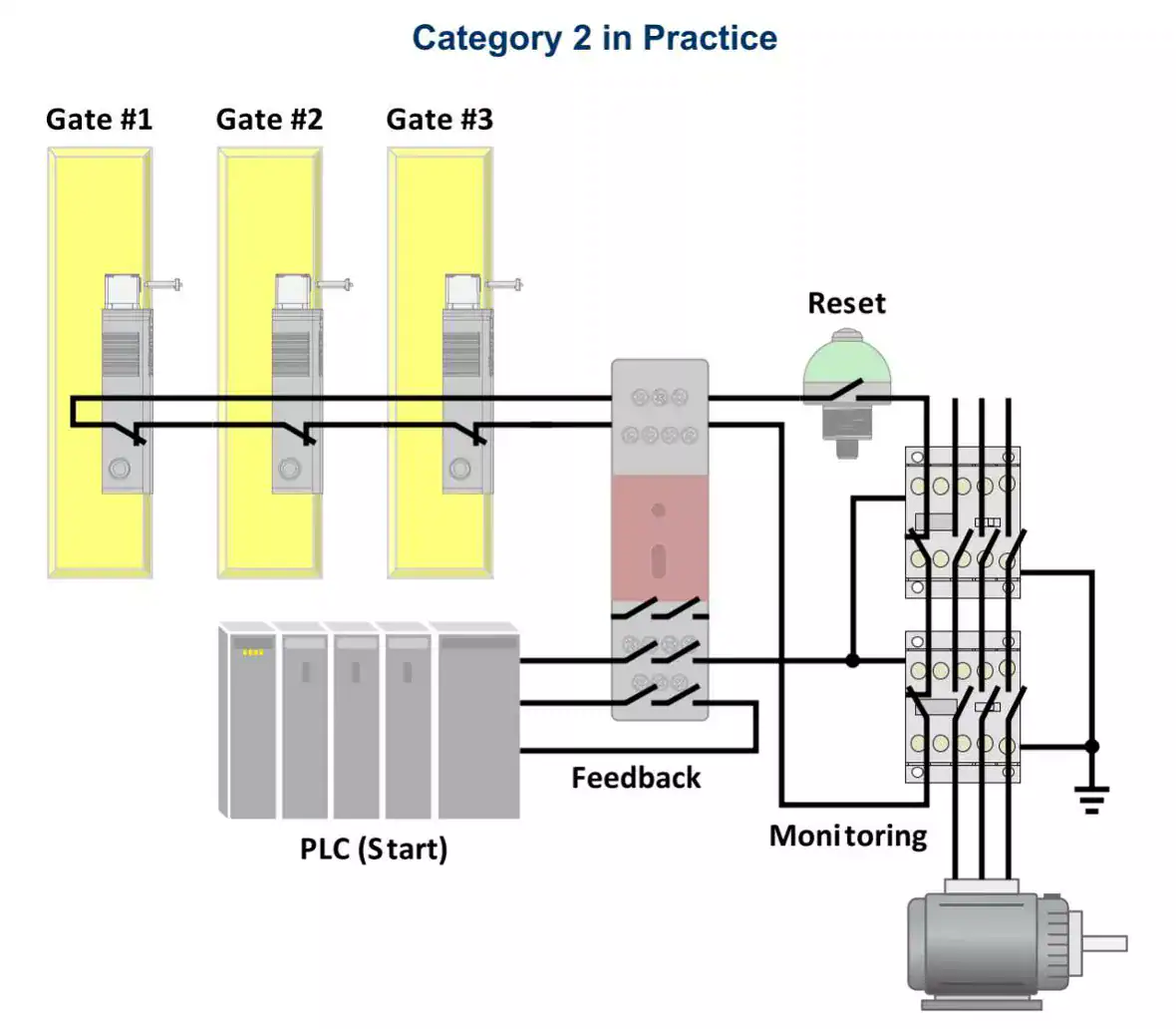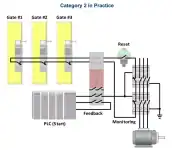Recommended Reading: Selecting the Right Safety Category Level for Interlock Switches


 In safety standards, the term “category” is commonly used to specify a particular level of reliability. ISO 13849, which deals with the safety of machinery and its control systems, defines “category” as the classification of the safety-related parts of a control system based on their ability to resist faults and their behavior when faults occur. In essence, a category explains how a safety circuit is wired, how it detects faults, and how it responds to them. There are five categories: B, 1, 2, 3, and 4. These represent a range from least to most reliable in maintaining safety in case of a fault.
In safety standards, the term “category” is commonly used to specify a particular level of reliability. ISO 13849, which deals with the safety of machinery and its control systems, defines “category” as the classification of the safety-related parts of a control system based on their ability to resist faults and their behavior when faults occur. In essence, a category explains how a safety circuit is wired, how it detects faults, and how it responds to them. There are five categories: B, 1, 2, 3, and 4. These represent a range from least to most reliable in maintaining safety in case of a fault.